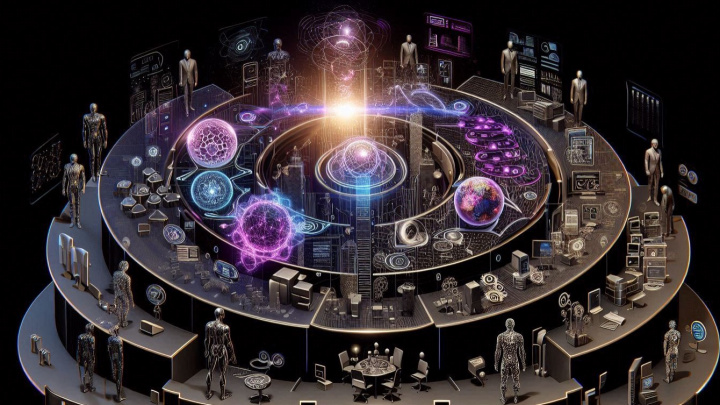OpenAI's Five-Level Roadmap to Artificial General Intelligence (AGI)
OpenAI recently unveiled its internal five-level roadmap for achieving Artificial General Intelligence (AGI). This milestone framework outlines the company's vision for developing AI that could potentially revolutionize the field and surpass human capabilities across various domains. Bloomberg reporter Rachel Metz first brought this plan to light, detailing the stages and potential metrics OpenAI might use to track its AGI development progress.

OpenAI's AGI Roadmap Levels
OpenAI's internal five-level plan provides a structured framework for tracking AI development. The system was reportedly shared with employees on July 9, 2024, with plans to potentially present it to investors and external parties in the future. The roadmap describes five levels of AI capability, starting from conversational AI (Level 1) and progressing through subsequent stages up to AI systems functioning like entire organizations (Level 5). OpenAI currently places itself at Level 1, approaching Level 2, which signifies AI systems capable of PhD-level problem-solving. The roadmap is intended to be a living document, refined based on feedback and technological advancements.
AGI, or Artificial General Intelligence, refers to a hypothetical type of artificial intelligence that possesses the ability to understand, learn, and apply knowledge across a wide range of intellectual tasks, essentially matching or exceeding human cognitive abilities. This contrasts significantly with current narrow AI systems, which are optimized for specific tasks. AGI holds the potential to revolutionize numerous industries, from scientific research to complex problem-solving. However, its development also poses substantial technical and ethical challenges, including concerns about safety, control, and societal impact. Currently, AGI remains a theoretical concept, and there is ongoing debate about when, or even if, it can be achieved.
Level 1: Conversational AI
The first level of OpenAI's AGI roadmap focuses on conversational AI, representing the company's current technological state. At this stage, AI systems excel at engaging in natural, human-like conversations, demonstrating basic comprehension and the ability to respond to a wide variety of queries. This level is exemplified by models like ChatGPT, capable of discussing diverse topics with users. While impressive, this stage is merely the beginning of the journey towards AGI, and OpenAI acknowledges that significant advancements are needed to reach more sophisticated levels of artificial intelligence.
Level 2: Thinkers
Level two of OpenAI's roadmap introduces "Thinkers" – AI systems capable of solving complex problems at the level of human experts. These systems are envisioned to handle problem-solving tasks with the competence of a PhD-level individual, potentially without relying on external resources for the core reasoning. This milestone marks a significant leap from mimicking human interaction to demonstrating genuine intellectual prowess in specific domains. OpenAI believes it is approaching this level, signifying an important transition towards more advanced reasoning and problem-solving capabilities in AI.
Level 3: Agents
At the third level of the roadmap emerge "Agents" – AI systems designed to operate autonomously over extended periods. These advanced models could potentially act on a user's behalf for days, handling intricate tasks, making decisions, and adapting to changing circumstances without constant human supervision. This level represents a major jump in AI autonomy and practical utility, potentially revolutionizing industries by managing complex operations independently. Developing such agents marks a crucial step towards more sophisticated AI applications, bridging the gap between problem-solving capabilities and functioning as independent entities in real-world scenarios.
Level 4: Innovators & Level 5: Organizations
Level four ventures further, introducing "Innovators" – AI systems capable of generating groundbreaking ideas and solutions across various fields. This stage represents a profound advancement, indicating AI's capacity to drive progress and innovation autonomously. The roadmap culminates conceptually at Level 5, envisioning AI "Organizations" – systems that could function as entire entities, possessing strategic thinking, operational efficiency, and adaptability to manage complex systems and achieve organizational goals. While these advanced levels (4 and 5) remain largely theoretical and aspirational, they represent the ultimate ambition for many AI researchers and highlight AI's potential to fundamentally reshape industries and organizational structures in the future.
Conclusion
OpenAI's five-level roadmap for achieving AGI offers a structured and ambitious approach to charting the course of AI development. By defining progressive stages of AI capability, it allows for the potential establishment of clearer metrics and goals, helping OpenAI and stakeholders track and understand the ongoing evolution of artificial intelligence. This internal plan reflects not only the company's view on technological milestones but also signals its long-term vision for the transformative potential of advanced AI.